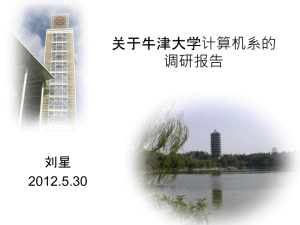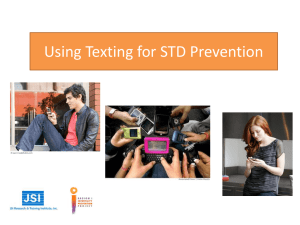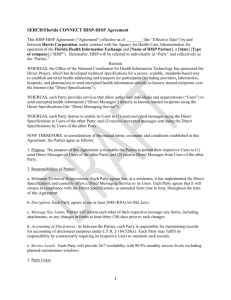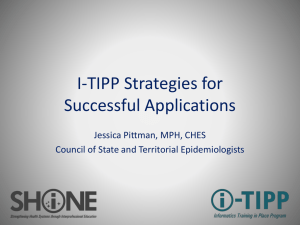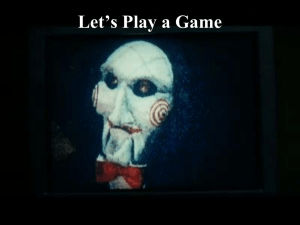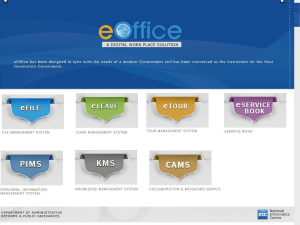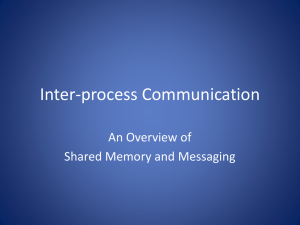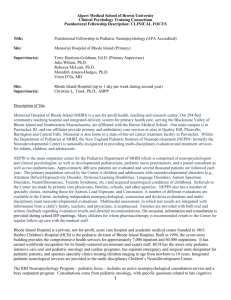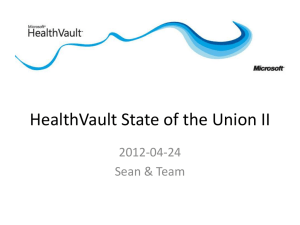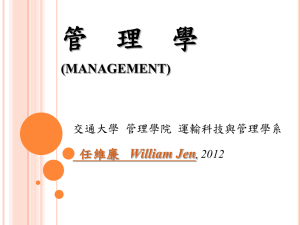LDT_Comm_PPT_FINAL2
advertisement
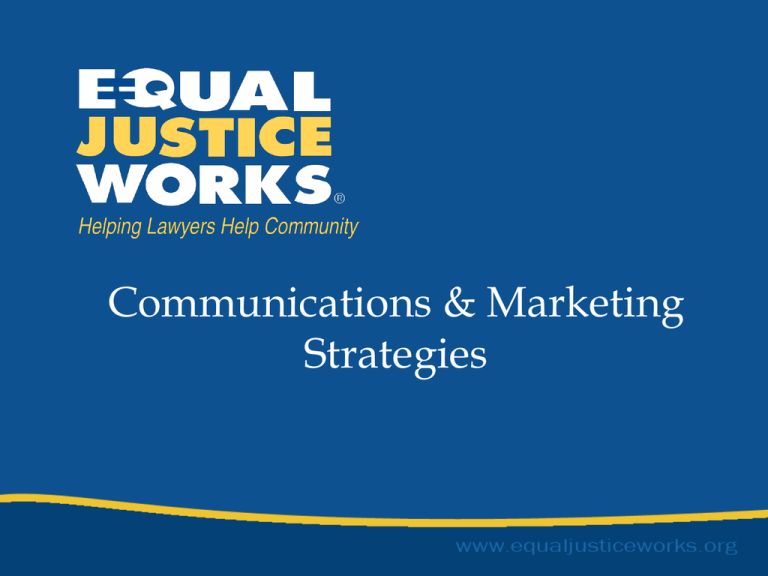
Communications & Marketing Strategies Communications & Marketing Strategies • Peggy Hubble, Director Communications & Marketing, Equal Justice Works My background: – Writer & Researcher - U.S. Commission on Civil Rights – PBS & NBC News - Director of National Media – PR Firm Partner & Director • Texas Council on Family Violence • Texas Health Institute Presenters • John Stauffer Vice President and Senior Digital Strategist Social@Ogilvy • Camille Pannu – 2011 Equal Justice Works Fellow • Lan Diep – 2010 Equal Justice Works AmeriCorps Fellow Purpose of Session • To provide Fellows with information on how to communicate information successfully about their fellowship work, Equal Justice Works, and related topics. • To help Fellows become more effective advocates for their program and Equal Justice Works. • To educate and equip Fellows with the tools to achieve the goals above. Communications • Connections • Interactions • Relationships • Exchanges • Contacts • Network Marketing • Promotion • Endorsement • Encouragement • Support Public Relations • Image management • Self promotion •Publicity • Public image Communications – Marketing – Public Relations Raise – elevate – advance the profile of your fellowship, your host organization, and Equal Justice Works. Media • Traditional media – Broadcast – TV and radio – Print – newspapers, magazines, newsletters • Social media – Other panelists will discuss this following me. Most of the rules still apply with regard to research, outreach, developing relationships. Other Audiences • Community Leaders • Educational Institutions • Chambers of Commerce • Churches – Religious Leaders Communications & Marketing Strategies How to communicate with your audiences… Develop Your Message (Elevator Speech) Newsworthy and Noteworthy • What is the issue? • Why is it important? • What are you doing about it? • How will this help? • Personal stories? • Success stories? Discuss/practice/ receive feedback from your colleagues and others whose opinion you trust or who have knowledge of the issue. Create Compelling Materials • Basic fact sheet(s) • Press Advisory or Press Release upon a noteworthy development Do Your Research • On the media who cover your issue or similar issues. • On community organizations that could endorse or otherwise play a role in your project. • On a specific community leader who has a connection to your issue (e.g., who has a family member or loved one who is facing an issue that relates to your work). Media Opportunities - Targets • Local newspaper, local TV newscasts, public radio station (local and national), CNN • Pitch story ideas for special features of specific news programs (Out on the Porch, Consumers’ Rights, Person of the Week) • Letter to the Editor • Op-Ed • Editorial Board Meeting Community Opportunities - Targets Get someone popular in the community to help tell your story: • Popular, well-liked figure in sports, music, TV newscaster, government • • • • Nolan Ryan – famous baseball pitcher, Texan Hispanic musician for Spanish language media Mayor Governor or Governor’s wife Make Contact • Media outreach – E-mail followed by call • With other identified constituents/community leaders • Timely communications • Follow up Ongoing Relationships • Acknowledge the media person or community group that met with you. • Send a complimentary note or e-mail after a story runs. • Always follow up with updated or new information. • Send them information that you think may interest them, even if it is not directly about your project/fellowship. • Offer to bring coffee by their office, meet for lunch. General Guidelines for Media Interviews • Always tell the truth. • Never talk off the record. If you don’t want it in the story, don’t say it. • Focus on the points you want to make and then make them. You can answer an unrelated question very briefly, but “bridge” back to your key points. • Never lose your cool – even in the face of hostile questions. General Guidelines for Media Interviews • State the most important fact(s) first. Then explain, give context. • When appropriate, talk in personal terms – “I” – “we.” • If you don’t know the answer to a question, it’s ok to say so. “I don’t have that information, but I can find out and get back to you.” Then be sure you do. • If you are asked about an irrelevant topic, you may say, “I’m not prepared to discuss that, what I can talk about is xxx.” • Don’t repeat negative words, even to deny them. General Guidelines for Media Interviews • Never say “No comment.” If you can’t talk about something, say why not, if possible. • Never speculate. Never speak for anyone else – that includes explaining why they said what they did. • Make your responses relevant to the audience. • Answer in complete sentences. • Think in terms of 8-15 second sound bite (ink bites). Communications & Marketing Strategies • Make the time! • Make a plan! • Make a difference! Social Media • Facebook • Twitter • LinkedIn • Blogs • You Tube John Stauffer • Vice President at Social@Ogilvy based in Washington D.C. • Previously served as the Regional Director of Strategy for Ogilvy in Asia Pacific. • Guest lecturer at Johns Hopkins University, Georgetown University and the University of Maryland speaking about the role of social media in marketing and communications programs. • Contributes to the Social@Ogilvy Blog as well as the Asia Digital Map, and serves as a regular host of a “Social Media for Executives” training series sponsored by The Wall Street Journal Asia. • On the editorial board of the Journal of Digital & Social Media Marketing. Digital Media Research Finding and engaging with your audiences online • Use Twitter’s search tools to spot events, trends and influencers in your area. • Keep a database of journalists covering public interest law in your area. • Join Meetup.com, build a profile, and connect with others in the communtiy online and off. Building a Profile Creating awareness online • Use professional networks like LinkedIn to showcase your portfolio. • Respond to journalists through social media – Twitter, Facebook, in comments on news content. • Join and participate in online groups devoted to your subject matter expertise. Building a Profile Creating Content Thinking Like a Journalist • Videos and photos help to tell your story online. • Capture content at events, during your fellowship, and with colleagues to build a narrative to attract media and community leaders. • Tie your work into a broader consumer or business trend. Communications & Marketing Strategies Equal Justice Works Fellow Alumni Camille Pannu • Law clerk, U.S. District Court in Connecticut • 2011 Equal Justice Works Fellow Center on Race, Poverty & the Environment and the Sustainable Economies Law Center • Passion – Addressing issues of poverty and social inequality that intersect with environmental justice and community development. • JD, University of California, Berkeley, School of Law Camille Pannu Objectives for this Presentation • Messaging 101 • Establishing Authenticity & Authority • Understanding Your Audience (and knowing how to tweak your message) • Developing & Managing Relationships Messaging 101: Speak Like a “Real Person” • The Grandma Test • Avoid Common Lawyer Pitfalls • Identify the Barrier You’re Going to Storm • Focus on Outcomes and Opportunities Messaging 101: Real Person, cont’d. A Lawyerly Project Description: “Strengthen grassroots efforts to establish green jobs, foster economic empowerment, and build democracy in rural San Joaquin Valley communities of color through comprehensive legal services.” Messaging 101: Real Person, cont’d. Same Project, in Human: “I believe that everyone deserves to live in a community where the air they breathe and water they drink will not kill them. [so…] …I partner with low-income, rural residents to build communities where everyone can thrive.” Messaging 101: Framing the Problem Lawyer Edition: • “Over 200,000 Californians lack access to clean, safe drinking water.” • “Rural communities lack basic infrastructure, like sewers and roads.” Messaging 101: Framing, cont’d. Human Edition: Each year, hundreds of children in the U.S. die from blue baby syndrome, a form of nitrate poisoning that suffocates a child from the inside out. Messaging 101: Framing, cont’d. Human Edition: With no roads, sidewalks, or sewers, residents must walk two hours on a state highway to reach the nearest store that sells food. Messaging 101: Outcomes A lawyerly description of outcomes: • I run three monthly clinics across the City. • I provide direct legal representation. • I conduct know-your-rights presentations. • I fundraised a bunch. • I engage in legislative advocacy. • I write reports/policy briefs, etc. Messaging 101: Outcomes Outcomes, in Human: • 300 homeless youth will have a clean, safe place to sleep tonight. • 400 trafficked women will be able to access lawful [immigration] status without fear of retaliation. • LGBT students will be able to attend school without fearing for their lives. • 100,000 children living in poverty will receive essential medical care. Know Your Audience • Identify areas of common concern or alignment. • Be flexible on how the issue is framed. • Understand when and how to deploy emotion. • Know when to speak like a lawyer. • Know when to speak like a “real person.” • Know when to refer out. Build & Cultivate Relationships • With sponsors • With “specialty” and “ethnic” press • With “traditional” press • With everyone you meet Camille, out! Contact Information: camille.pannu@gmail.com Lan Diep • Shartsis Friese LLP Public Interest Fellow at the Legal Aid Society - Employment Law Center in San Francisco. • 2010 Equal Justice Works Fellow. Mississippi Center for Justice serving Vietnamese American fishermen impacted by the BP oil spill. • White House “Champion of Change” Award (2011) and the Daily Point Light Award (2012) • JD, University of the Pacific, McGeorge School of Law, Sacramento, CA Lan Diep Perspectives from a Former Fellow Applying what’s been discussed so far to your day-to-day reality… 48 Laws of Power—Law 6: COURT ATTENTION AT ALL COST Everything is judged by its appearance; what is unseen counts for nothing. Never let yourself get lost in the crowd then, or buried in oblivion. Stand out. Be conspicuous, at all cost. Make yourself a magnet of attention by appearing larger, more colorful, more mysterious than the bland and timid masses. –Robert Greene Means to Garner Attention • Media – New Media – Social Media • • • • Facebook Twitter Avvo LinkedIn – Traditional Media • Radio • Newspapers • Person-to-Person Relationships Know Your Environment from the Inside Out – Connection Most people think first of what they want to express or make, then find the audience for their idea. You must work the opposite angle, thinking first of the public. You need to keep your focus on their changing needs, the trends that are washing through them. Beginning with their demand, you create the appropriate supply. Do not be afraid of people’s criticisms—without such feedback your work will be too personal and delusional. You must maintain as close a relationship to your environment as possible, getting an inside “feel” for what is happening around you. Never lose touch with your base. – 50 Cent & Robert Greene, The 50th Law The Human Element: Creating Public Narratives Public narrative is a leadership art composed of three elements: 1. a story of self, (my values, my experience); 2. a story of us, (our shared values, our shared experience); and 3. a story of now (articulating the present as a moment of challenge, choice and hope). - as developed by Marshall Ganz PhD Contact Me! Text Shazam to 50500 for my contact info. Communications & Marketing Strategies Questions? Communications & Marketing Strategies Communications Worksheet Develop Your Message (Elevator Speech) Newsworthy and Noteworthy • What is the issue? • Why is it important? • What are you doing about it? • How will this help? • Personal stories? • Success stories? Discuss/practice/ receive feedback from your colleagues and others whose opinion you trust or who have knowledge of the issue. Communications & Marketing Strategies Tell us your story… Volunteers? Communications & Marketing Strategies Questions? Peggy Hubble Director, Communications & Marketing phubble@equaljusticeworks.org www.equaljusticeworks.org
